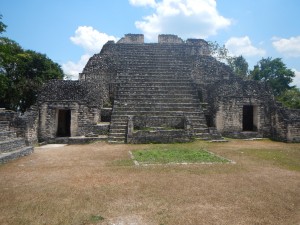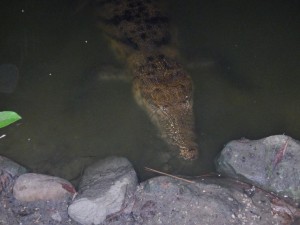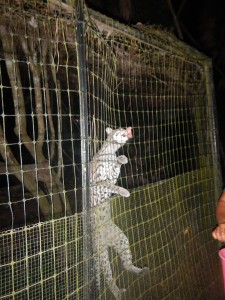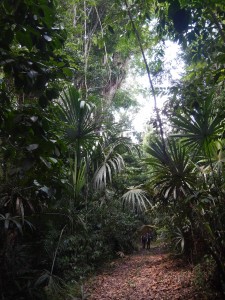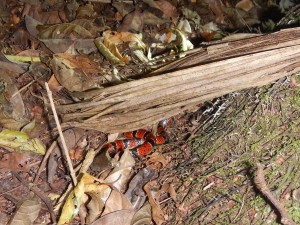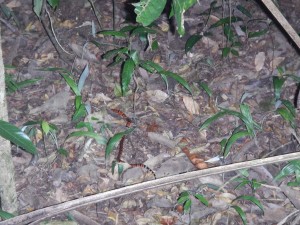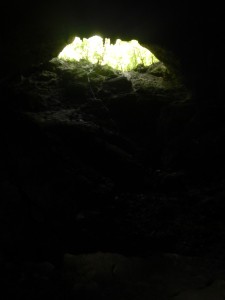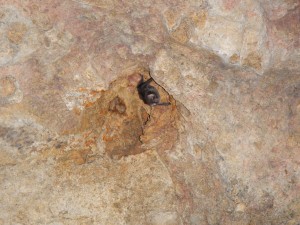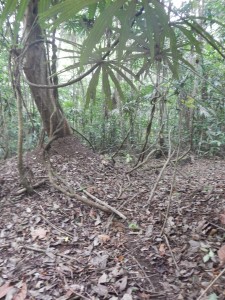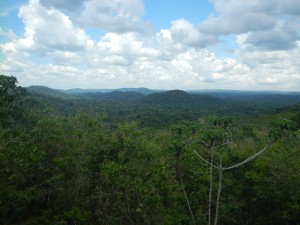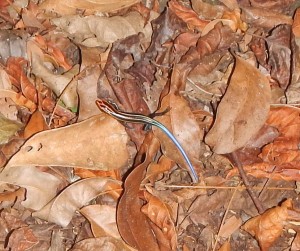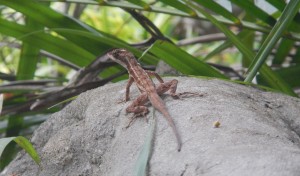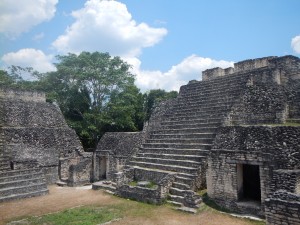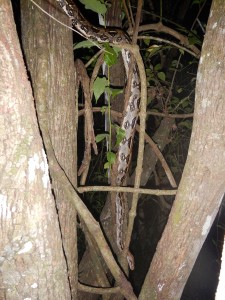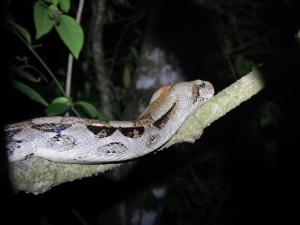Today we completed our journey south-west through Cayo and into the Chiquibul rainforest. On our way to our home camp at Las Cuevas Research Station we took an anthropological detour through Mayan ruins. We were guided through the Caracol Archeological site and climbed up and in and down the ruins and tombs. Even though it was mostly overgrown and covered by years of sediment the pyramidal structures still stood and it was easy to image the bustling metropolis it was 2000 years ago. Hearing about the (hypothesized) reasons for its decline was ominous; overpopulation, agricultural collapse, drought… sound familiar?
Even though its citizens are long gone the city is still full of life. Almost everyone found an animal from their taxonomic group—bromeliads, philodendrons, birds, mammals, and a plethora of plants. The highlights included an edible red fruit (you suck on the seeds but don’t eat them, looks like gunk, tastes like papaya), toucans, a coati and a blue crowned mot-mot.
Sadly there were not any amphibians around for me to identify. The area was much too dry to be a suitable habitat. Amphibians require a damp habitat because they experience high evaporative water loss through their skin. Most also require water for reproduction. Caracal was in the forest but it was not dense enough to retain the moisture necessary for most amphibians. Here in the forest surrounding Las Cuevas should be a much more habitable medium and we can expect to see a variety of species in the next few days.
Sophia Streeter
5-18

